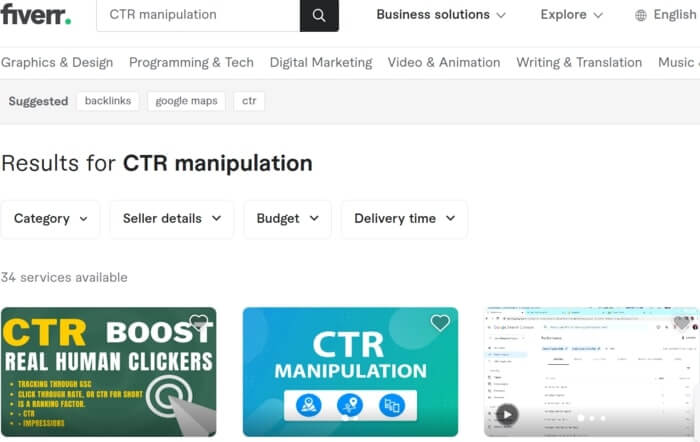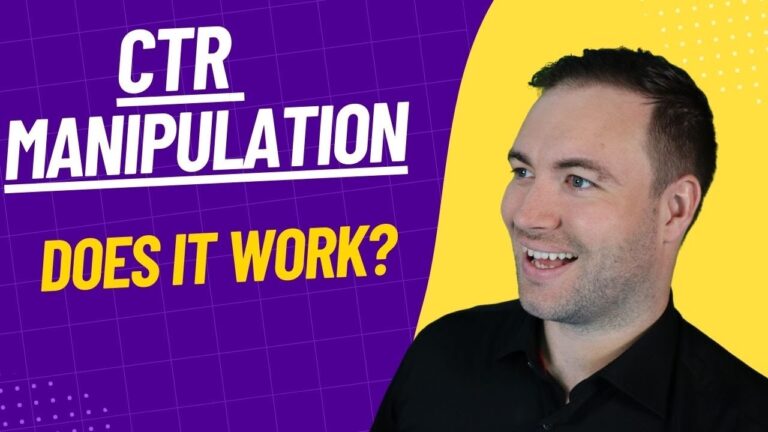Increase Your Local SEO with Expert GMB CTR Manipulation Techniques
Wiki Article
Maximizing Organic Click-Through Rates With CTR Manipulation
The optimization of natural click-through prices (CTR) is a nuanced undertaking that hinges on comprehending both user psychology and effective web content discussion. The landscape is swarming with mistaken beliefs and oversimplifications regarding what absolutely drives CTR.Recognizing Click-Through Fees
Comprehending click-through rates (CTR) is necessary for reviewing the efficiency of internet marketing methods. CTR determines the percentage of customers that click a certain link or advertisement contrasted to the complete variety of users that see it. A greater CTR suggests that the content is involving and appropriate to the target audience, while a lower CTR might signal a demand for optimization.To determine CTR, separate the variety of clicks by the number of impressions and increase by 100. For example, if an advertisement receives 300 clicks out of 10,000 impacts, the CTR would be 3%. This metric is important for examining various aspects of digital marketing, consisting of search engine optimization (SEO), e-mail campaigns, and social media sites marketing.
Furthermore, assessing CTR assists marketers identify which methods yield the most effective outcomes and which call for refinement. By concentrating on improving CTR, businesses can improve their web content's visibility and efficiency, leading to enhanced website traffic and potential conversions. Understanding the subtleties of CTR is foundational for any type of marketer intending to optimize their on the internet existence and maximize return on investment (ROI)

The Psychology of Customer Habits
Customer behavior is dramatically influenced by mental aspects that dictate how individuals communicate with online web content. Recognizing these factors is essential for optimizing click-through prices (CTR) in natural search results.Psychological responses also dramatically effect customer actions. Material that reverberates emotionally can activate a feeling of urgency or interest, motivating users to click. Furthermore, social proof-- such as customer evaluations or scores-- can boost trust and encourage interaction, as individuals usually look to the habits of others to inform their own decisions.
In addition, the concept of deficiency can drive clicks - GMB CTR Manipulation. Limited-time offers or exclusive material produce a concern of losing out (FOMO), compelling individuals to act swiftly. Recognizing these mental motorists allows online marketers to produce more compelling content that reverberates with their target market
Efficient CTR Control Techniques
Leveraging emotional insights can considerably improve click-through prices (CTR) through targeted manipulation techniques. One of one of the most efficient approaches is using engaging headings that stimulate curiosity or urgency. Wording titles as inquiries or including numbers can attract even more interest, motivating users to click.Another method involves optimizing meta descriptions to produce a feeling of importance and immediacy. By plainly outlining the options or advantages given in the material, you can engage potential visitors and persuade them to click. Additionally, making use of power words-- such as "special," "shown," or "cost-free"-- can enhance the appeal of your content.
Visual components likewise play a critical role. Integrating eye-catching pictures or thumbnails can draw users in and boost CTR. A/B testing different visuals can aid identify which photos reverberate finest with your target market.
Finally, guaranteeing that your web content assures deliverable worth causes higher CTR. They are much more most likely to engage when individuals perceive that clicking will supply them with purposeful insights or solutions. By utilizing these strategies thoughtfully, marketing experts can properly control CTR to their advantage while CTR Manipulation preserving moral standards.
Typical Misconceptions Concerning CTR
Numerous false impressions surround click-through rates (CTR) that can lead marketing experts to make misdirected decisions. While a high CTR recommends that more individuals are clicking, it does not guarantee sales or conversions.One more usual idea is that CTR is a separated metric. Actually, CTR ought to be reviewed together with other efficiency signs, such as bounce rate and conversion rate, to get an alternative view of campaign success.
In addition, some online marketers assume that maximizing for CTR alone suffices. Nevertheless, concentrating specifically on CTR can cause clickbait strategies that might draw in clicks but fall short to engage users meaningfully. This approach can damage brand name online reputation and result in lower retention rates
Lastly, there is a concept that CTR methods are widely reliable. The truth is that optimum CTR tactics can vary substantially across markets and target market, demanding customized methods for different market sectors. Understanding these misconceptions is vital for developing efficient CTR techniques that align with overarching marketing objectives.
Gauging CTR Success
Although high click-through rates (CTR) can indicate effective engagement with material, gauging their true success calls for a thorough analysis of several aspects. Initially, it is important to understand the context in which the CTR is accomplished. For example, a high CTR on a deceptive title may not translate to significant interaction or conversions, eventually reflecting badly on the brand's integrity.2nd, examining the resource of website traffic is critical. Organic traffic from search engines can represent a robust material technique, while clicks from unimportant sources may indicate a lack of targeting. Additionally, measuring the subsequent customer actions is essential; assessing metrics such as bounce price, time invested in web page, and conversion prices can give much deeper understandings right into the high quality of the interaction started by the CTR.

Final Thought

The optimization of natural click-through rates (CTR) is a nuanced undertaking that pivots on comprehending both customer psychology and efficient web content presentation. CTR measures the percentage of individuals who click on a specific link or ad contrasted to the total number of customers who see it. A higher CTR suggests that the web content is engaging and appropriate to the target audience, while a reduced CTR might signal a demand for optimization.
Focusing solely on CTR can lead to clickbait methods that may bring in clicks but stop working to involve users meaningfully. Furthermore, gauging the subsequent customer behavior is crucial; evaluating metrics such as bounce price, time invested on page, and conversion prices can give deeper insights into the top quality of the engagement launched by the CTR.
Report this wiki page